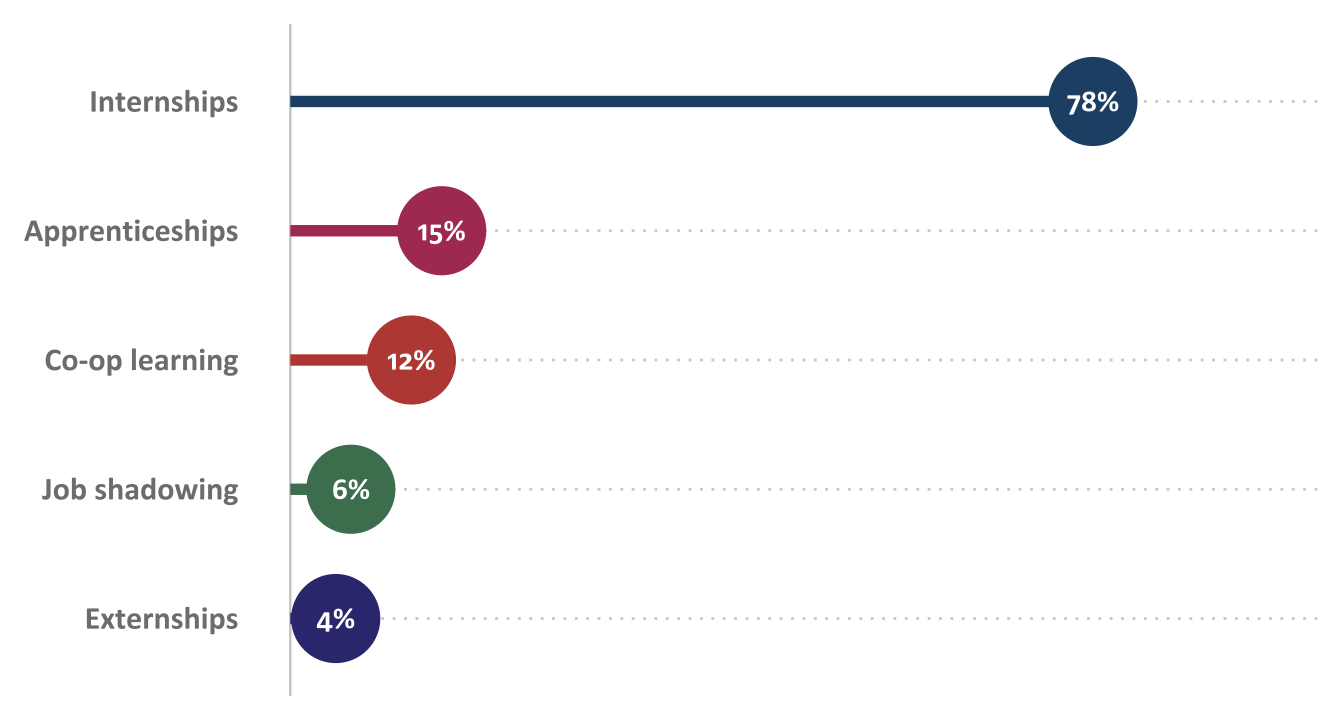
Chapter 5 Workplace-Based Learning
5.0.0.0.1 Workplace-based learning includes any situation in which a student gains experience at a work site, such as through internships, apprenticeships, co-op learning, and job shadowing. Research indicates that such experiences contribute to students’ confidence in their abilities and enhance employability skills, such as problem-solving, communication, and professionalism (Jackson, 2014).
5.0.0.0.2 ATE PIs whose projects offered workplace-based learning were asked about key characteristics of the workplace-based learning opportunities they offered and about the number of students who participated in these activities in 2020.
5.1 Workplace-Based Learning
5.1.0.1 Twenty-one percent of ATE projects provided workplace-based learning opportunities for students.
In 2020, 1,300 students participated in workplace-based learning opportunities offered by 66 ATE projects. An additional 3 ATE projects reported offering field trips to business and industry sites. The 21% of projects that provided workplace-based learning in 2020 excludes the 3 projects that only reported offering field trips.
5.1.0.1.1 Most ATE projects offered workplace-based learning through internships and apprenticeships.

Figure 5.1: Percentage of ATE projects that offered each type of workplace-based learning (n=66)
The median number of weekly hours that students spent in a workplace-based learning activity ranged from 4 to 18, and the median number of weeks spent in an activity ranged from 5 (job shadowing) to 42 (apprenticeships).
Respondents discussed a variety of benefits to both students and employers. As one respondent noted, these opportunities allow student experiences in:
“Relating academic studies with practical work experience, building industry partnerships, … customized learning for students, building student resume and exposure to industry options, soft-skills development, filling tangible needs for local industry and creating partnerships that lead to jobs for students after graduation.”
Survey respondents reported on the characteristics of the workplace-based learning their projects offered. The table shows variation both within and across activities.
| Internships (n=53) | Apprenticeships (n=10) | Co-op learning (n=8) | |
|---|---|---|---|
| Required by program | 51% | 50% | 50% |
| Academic credit | 68% | 50% | 88% |
| Coupled with a course | 58% | 70% | 62% |
| Received payment | 72% | 60% | 50% |